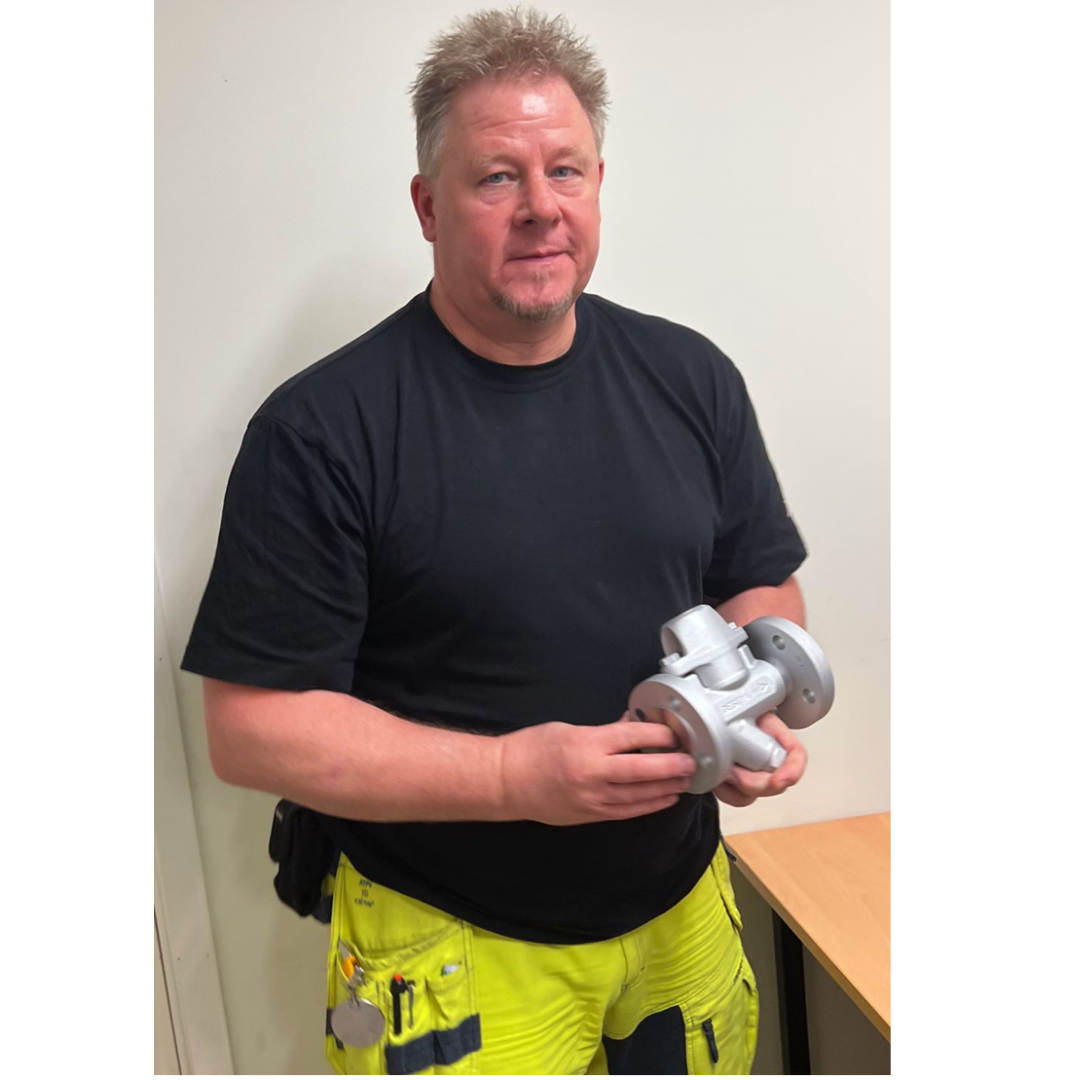Functioning vapour traps important for economy, safety and environment
The proper functioning of the vapour traps is of great importance for the efficiency of the plant.
Steam is the most common medium for distributing heat in the process industry. About 80% of the energy used in the pulp and paper industry goes into generating steam. Steam systems consume about half of the energy used in the chemical industry and oil refineries.
Steam traps are used in all types of facilities that distribute process heat. From laundries, which may have a few, to refineries, which may have tens of thousands. Steam traps stuck in the closed position can cause damage to the plant and even personal injury. Steam traps that leak or are stuck in the open position cause energy losses.
Vapour traps can also be called steam traps or condensate traps.
Effective vapour flow
The steam trap removes water condensed in the pipes when the energy content of the steam is transferred to the process. If the steam traps do not work, the steam cannot flow through the system as it should and it can be difficult to control the process as precisely as you want it to. Reduced energy efficiency can be costly.
When heat is added to the system, the temperature of the steam increases, assuming that all the water in the system is in the form of steam. However, if there is water in the system, it will vaporise when heat is added, increasing its volume. This increases the pressure in the plant, while not getting the increase in temperature that was expected.
Water can also block the pipes and disrupt the process. There can even be damage to the plant if the steam pushes a volume of water in front of it at high speed, causing water hammer. Water that accumulates in one place, such as a bend, can be accelerated by the flow of steam and remain there, spinning and eroding the metal, in the worst case until a leak occurs.
Save energy and money
The condensate discharged by the steam traps should be recycled as much as possible If the steam is to be heated to 120 degrees, it is a clear advantage if you can start with water that is perhaps 80 degrees.
Recycling also saves chemicals added to the system to prevent corrosion, for example. Condensate that is drained off must be cleaned of chemicals. New water that is added contains more oxygen, which can cause corrosion in the pipes ? another reason not to drain more water than necessary.
The losses caused by leaking steam traps can be significant. A steam trap that leaks 13.5 kg of steam per hour is losing steam worth £17,000 per year, if the steam costs £450 per tonne to produce. Multiply that by the number of steam traps in a plant and you realise that you are losing a lot of money. In addition, you have to pay for additional CO2 emissions, which in this case is just over SEK 6,000 per year for each leaking steam trap.

'You need to measure at least a thousand vapour traps before you get the right feeling,? says Stefan Eriksson at Vimab.
Testing during operation
In order to ensure that the vapour traps are working properly, vapour trap measurements should be carried out at regular intervals. Vapour traps are tested during operation. Therefore, it is preferable to do this a few weeks before the plant is shut down and maintenance can be carried out.
The functioning of the vapour trap is checked with an ultrasonic meter that also measures temperature. The measured values are uploaded to a computer and analysed.
? But it's not just a matter of measuring, the job also requires a certain dexterity. I usually say that you need to measure a thousand vapour traps before you get the right feeling," says Stefan Eriksson, who is Vimab's expert in vapour trap measurement.
The benefits of vapour deposition are many - it is a proven process that works, makes the plant more efficient, saves money and reduces environmental impact.
Want to know more about vapour trap measurement? Click here for more information

